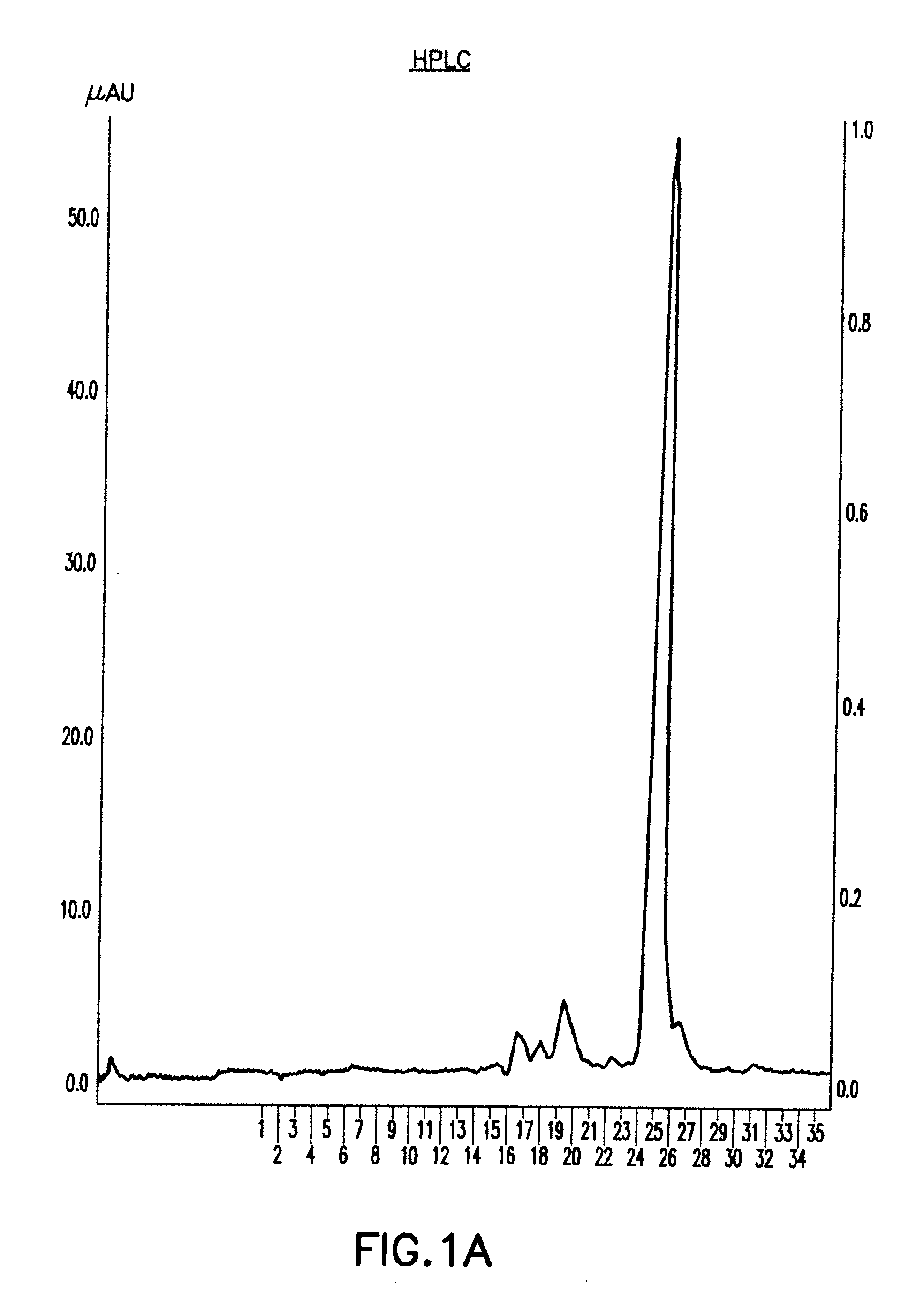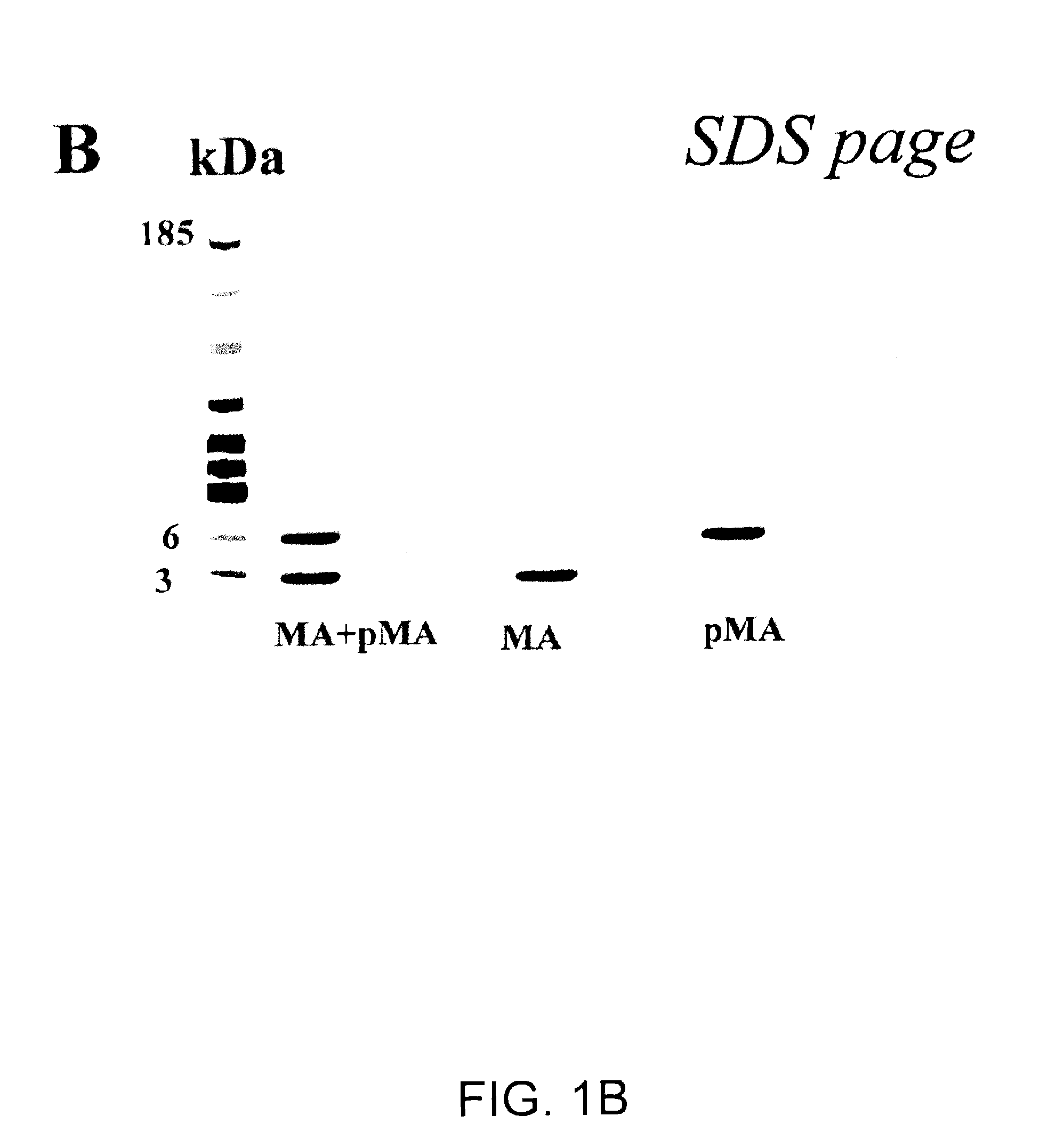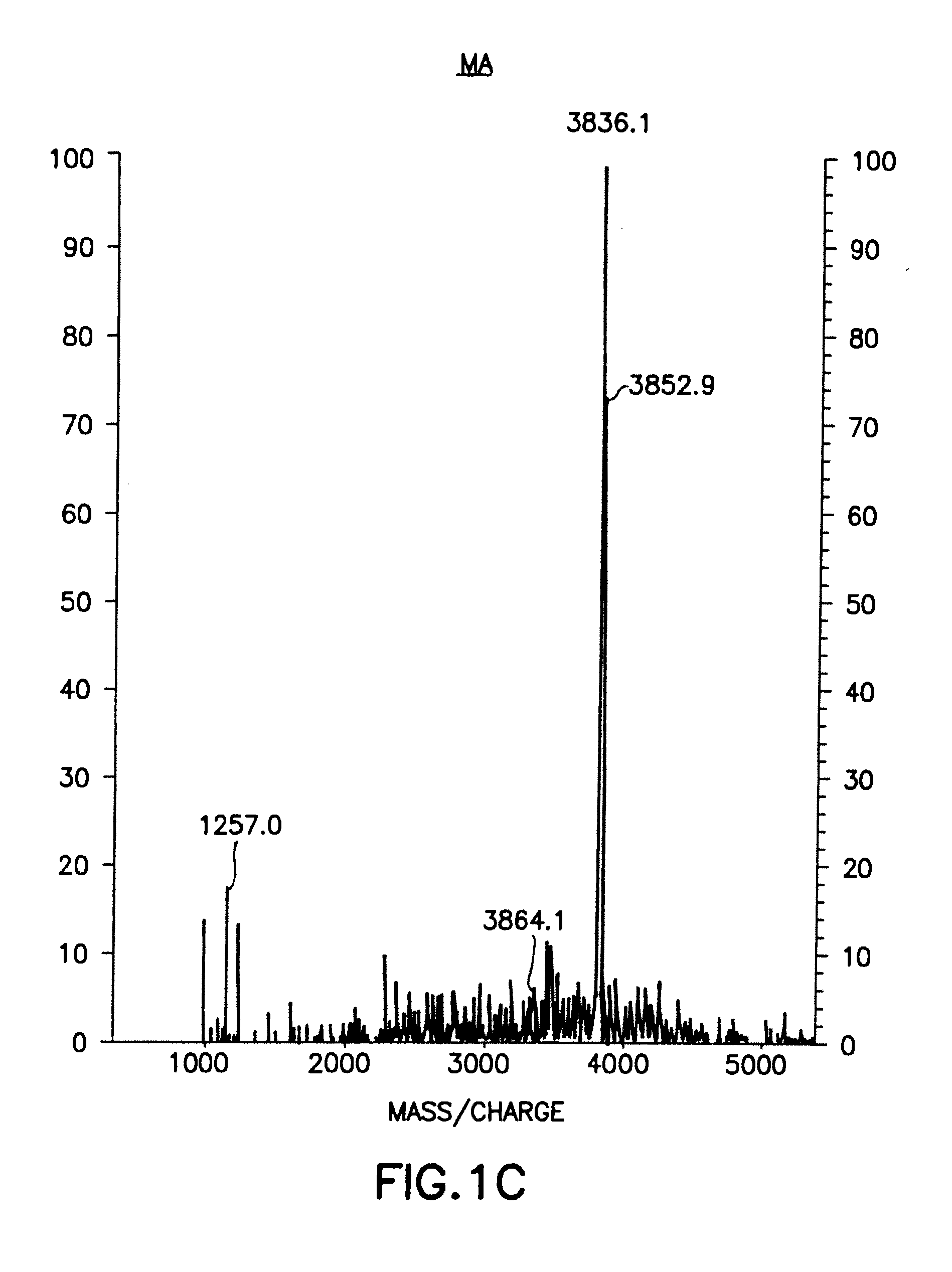Biologically active polypeptides derived from a novel early stage pregnancy factor designated maternin (MA)
a technology of maternin and polypeptide, which is applied in the field of therapeutic polypeptides, can solve the problems of inconvenient preparation of crude preparations, t cell count and physical symptoms, and preventing accurate determination of ideal dose, etc., and achieves the effect of eliminating the biological activity of the therapeutic polypeptid
- Summary
- Abstract
- Description
- Claims
- Application Information
AI Technical Summary
Benefits of technology
Problems solved by technology
Method used
Image
Examples
examples
[0599]Except as specifically described herein, methods used in the ensuing examples have been previously published.164
[0600]9.1 Isolation and Characterization of the MA Peptides
[0601]The active factor was isolated and purified from three sources with similar results:[0602]a 2 day freshly collected sample of urine from women in early (first trimester) pregnancy kept at 4° without any additions, and used almost immediately after collection;[0603]urine collections made over several weeks from women in early pregnancy and stored at −80° with sodium azide; and[0604]commercial preparations of hCG pre-tested for activity.
[0605]9.1.1 Preparation of MA Peptides from Urine
[0606]Three different sources of the therapeutic polypeptides, previously shown to contain all the biological activities previously described in the filing, were used for the starting materials: A. Commercial hCG preparations. B. 24 hr urine collection from 2 different volunteers in the first trimester of pregnancy [3˜4 wee...
PUM
| Property | Measurement | Unit |
|---|---|---|
| molecular mass | aaaaa | aaaaa |
| molecular weight | aaaaa | aaaaa |
| molecular weight | aaaaa | aaaaa |
Abstract
Description
Claims
Application Information
 Login to View More
Login to View More - R&D
- Intellectual Property
- Life Sciences
- Materials
- Tech Scout
- Unparalleled Data Quality
- Higher Quality Content
- 60% Fewer Hallucinations
Browse by: Latest US Patents, China's latest patents, Technical Efficacy Thesaurus, Application Domain, Technology Topic, Popular Technical Reports.
© 2025 PatSnap. All rights reserved.Legal|Privacy policy|Modern Slavery Act Transparency Statement|Sitemap|About US| Contact US: help@patsnap.com



